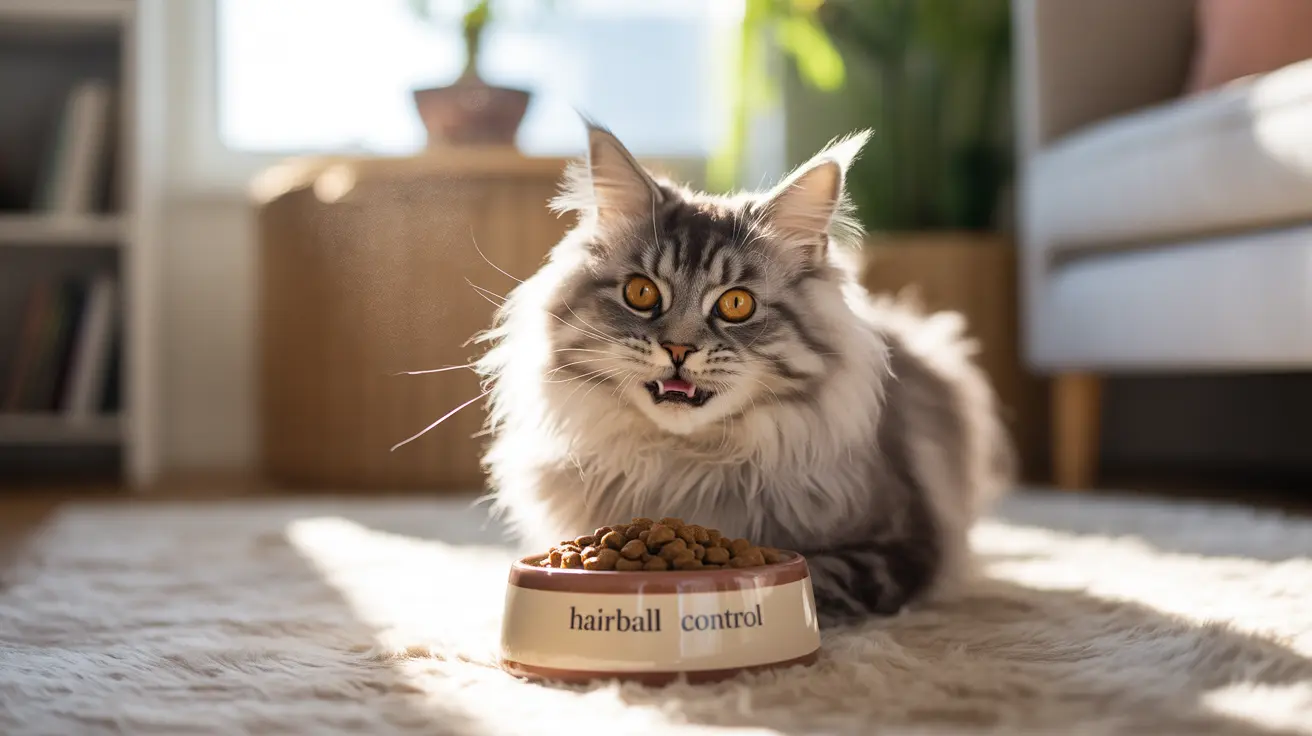If you're a cat owner dealing with frequent hairballs, you're not alone. These unpleasant digestive byproducts affect roughly one-third of all domestic cats, but the right diet can make a significant difference. Let's explore how specialized cat food for hairballs can help your feline companion stay healthier and more comfortable.
Understanding the role of proper nutrition in hairball prevention is crucial for every cat parent. The best cat food for hairballs combines specific fiber sources, balanced nutrients, and quality ingredients to help minimize hairball formation while supporting your cat's overall digestive health.
How Hairball Control Cat Food Works
Specialized hairball control cat food works through several key mechanisms. First, it contains higher levels of fiber - typically between 8-10% in dry food and 2-4% in wet food - which helps move ingested hair through the digestive tract rather than allowing it to form troublesome hairballs.
These formulations also include ingredients that support coat health, potentially reducing the amount of hair your cat ingests during grooming. Many contain omega-3 and omega-6 fatty acids, which help maintain healthy skin and reduce excessive shedding.
Key Ingredients for Effective Hairball Control
The most effective hairball control cat foods contain:
- Insoluble fiber sources like cellulose and beet pulp
- Omega fatty acids from fish oil or other sources
- High-quality animal proteins
- Natural fiber sources like pumpkin and psyllium husk
- Added vitamins and minerals for coat health
Choosing Between Wet and Dry Food
When selecting cat food for hairballs, both wet and dry options offer distinct benefits. Wet food provides essential hydration that helps move hair through the digestive system, while dry food typically contains higher fiber content that can help prevent hairball formation.
Many veterinarians recommend a combination of both types to maximize benefits. The moisture from wet food helps prevent dehydration, while the crunch of dry food can help clean teeth and provide concentrated fiber sources.
Transitioning to Hairball Control Food
When introducing new cat food for hairballs, gradual transition is crucial. Start by mixing a small amount of the new food with your cat's current food, slowly increasing the proportion over 7-10 days. This approach helps prevent digestive upset and increases acceptance of the new diet.
Additional Tips for Hairball Prevention
While specialized cat food is important, a comprehensive approach to hairball prevention includes:
- Regular grooming to reduce loose hair
- Providing fresh water sources to encourage hydration
- Using occasional hairball remedy gels when needed
- Monitoring your cat's grooming habits
- Regular veterinary check-ups
Frequently Asked Questions
How does cat food formulated for hairball control help reduce hairballs in cats?
Hairball control cat food contains higher levels of fiber that help move ingested hair through the digestive system instead of forming hairballs. It also includes ingredients that support coat health, reducing excessive shedding and hair ingestion during grooming.
What are the best fiber sources to look for in cat food to manage hairballs effectively?
The most effective fiber sources include cellulose, beet pulp, psyllium husk, and natural ingredients like pumpkin. These ingredients help "sweep" hair through the digestive tract while supporting overall digestive health.
Should I feed my cat wet or dry hairball control food for better results?
A combination of both wet and dry food often provides the best results. Wet food offers necessary hydration, while dry food typically contains higher fiber content. The choice can depend on your cat's preferences and specific needs.
Can specialized hairball cat food improve my cat's skin and coat health to reduce shedding?
Yes, quality hairball control cat foods contain omega fatty acids and other nutrients that support skin and coat health, which can help reduce excessive shedding and subsequent hairball formation.
How do I transition my cat to a new hairball control diet without causing digestive upset?
Gradually transition over 7-10 days by mixing increasing amounts of the new food with the current food. Start with 25% new food, slowly increasing to 100% while monitoring your cat's response.
Remember, while specialized cat food for hairballs can significantly help manage this common issue, every cat is unique. If hairballs persist despite dietary changes, consult your veterinarian to rule out any underlying health concerns and develop the best treatment plan for your feline friend.






